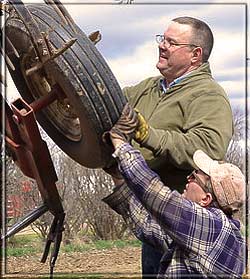18 February 2023 — 1544 mst
Pearl Harbor & Japanese bomb balloon déjà vu
Jon Tester’s belligerence on the Chinese balloon
is the surest sign yet he’s running for re-election
By James Conner

Sen. Jon Tester’s belligerence on the Chinese balloon is the surest sign yet that he’s either running for re-election or seriously keeping open his options.
“I don’t want a damn balloon going across the United States when we could’ve taken it down over the Aleutian Islands,” said Sen. Jon Tester (D-Mont.) during a Senate Appropriations Committee hearing Feb. 9. [Washington Post]
We splashed that balloon off the South Carolina coast after President Biden accepted our military’s advice to spy on the balloon as it floated across the U.S. and then take it down over shallow territorial waters.
A few days later, three Volkswagon beetle sized objects, almost certainly harmless research or commercial or hobbyist balloons, were discovered over Alaska’s north slope, Canada’s Yukon, and northern Montana. All were shot down by half-million-dollar Sidewinders. The object spotted over Havre, MT, was blown to Kingdom Come over Lake Huron the next day.
Canada is still trying to recover the object that went down in the Yukon wilderness, but the U.S. has called off the search for the remnants of the innocent floaters it shot down so hastily and expensively.
Tester knows Biden made the right choice. But he also knows that reddening Montana’s reaction to the Chinese balloon was Pearl Harbor and the Japanese WWII bomb balloons déjà vu. Had he decided not to run in 2024, he would be defending Biden. Instead, he’s waving a pitchfork in one hand, a Sidewinder in the other, demanding that Chinese balloons never be allowed to float through the Big Sky and above Big Sandy, Malmstrom Air Force Base, and missile silos whose locations have been widely known for decades.
Tester will lead the Senate’s investigation of the incident. I hope he leads it in a way that educates instead of inflames. At a minimum, he should invite experts to testify on the history of balloon warfare and spying, and in particular on the cold war’s Project Genetrix, and the Japanese bomb balloons that rode the jetstream to the U.S. in 1944–1945. But the more he grandstands, the more he waves the pitchfork and Sidewinder, the more he thunders “Shoot the damn things down over the Aleutians,” the surer we can be that he’s running for re-election.
About China’s superpressure balloon
China launched its balloon from Hainan Island in late January. After reaching approximately 60,000 feet, it was on a course that could take it over Guam, home to many U.S. military bases, 2,400 miles to the east. But for some reason the winds changed, carrying it north. We tracked it from the gitgo, and from the gitgo tried to keep our knowledge of it secret. But the secret was blown when people spotted it near Billings.

Generically, China’s big balloon was a superpressure balloon, an interesting technology we’ve been developing since the early sixties.
The superpressure balloon is a sealed, virtually non-extensible plastic cell that will float at a constant density altitude despite diurnal fluctuations in the “superheat” of the lifting gas. This type of balloon does not require ballast to maintain altitude. Instead, it depends upon the ability of the plastic cell to retain all of the lifting gas without significant change in volume, at varying pressures that always remain higher than ambient. The superpressure balloon is more efficient, and is considerably smaller than the valved balloon designed for the same altitude, payload and duration. It provides a highly stable platform for long-duration experiments in the stratosphere. [U.S. Air Force, 1962.]

Launch of the superpressure balloon carrying the Compton Spectrometer and Imager on 17 May 2016 at Wanaka, New Zealand. Video.
Was it a spy balloon? Perhaps the truth will emerge after analyzing the debris of the payload. Perhaps. I’ve no confidence that the American people, who have the right to the truth, will be told the truth. But if it was a spy balloon, so what? What could it have spied that was not already spied by China’s high resolution spy satellites? Yes, it floated over some missile silos in central Montana. Again, so what it if did? The silos have been there for decades. Their positions are well known. The balloon triggered a sense of trespass, and plenty of righteous indignation, but it did not compromise American national security. Indeed, the knowledge gained from surveilling the balloon as it floated across our homeland may have enhanced our national security.
Japan’s bomb balloons
From late November, 1944, to May, 1945, Japan launched approximately 9,300 bomb carrying balloons designed to ride the jetstream to the U.S., where they were supposed to ignite forest fires. Two-hundred-eighty-five ballons are known to have reached North America, a success rate of three percent, but more probably landed here undetected. Thirty-four landed in Montana. A couple made it to Michigan. Nine were shot down over the Aleutians.

No forest fires were started because the forests were packed with snow. One bomb killed a minister’s wife and five children in southern Oregon. Another took down a powerline in central Washington, cutting power to a nuclear reactor at Hanford. Had the balloons carried anthrax instead of explosives, the death toll might have been much higher. Although a limited technological success, the balloon campaign had no effect on the outcome of the war and thus was a military failure.
Most of the 10-meter diameter ballons were made of layers of paper from the mulberry tree. Using a starch based adhesive, schoolgirls glued the paper layers together. The orbs were treated with glycerin and lacquered. Aneroid barometers regulated a mechanism that kept the balloon at approximately 30,000 feet by either venting hydrogen or dropping sand ballast (these were zero pressure balloons). The bombs were either explosive (picric acid) or incendiary (thermite).

At launch the volume of the balloons was approximately 500 cubic meters. Hydrogen’s lifting power is approximately 1.2 kilograms per cubic meter.
Defense department geologists were able to identify the launch sites by identifying the beaches from which the sand ballast was obtained.
Robert Mikesh’s Japan’s World War II Balloon Bomb Attacks on North America (Smithsonian) remains the definitive account of Japan’s attempt to employ balloons as intercontinental bombers. A retired aviator, Mikesh was awarded two DFCs, and 11 air medals. He died last year at 94.
Can Tester win in 2024?
Yes, but not easily. He never wins easily. But he does win by holding Montana’s Democratic counties, and by winning crossover votes in red rural Montana.
In 2006, he defeated three-term incumbent Conrad Burns. Six years later, he defeated U.S. Rep. Denny Rehberg. And in 2018, he defeated Matt Rosendale, winning by a majority.
A poll on the 2024 U.S. Senate election, taken in late January, 2023, reported Tester beating Rosendale and Ryan Zinke handily, and locked in a tie with Gov. Greg Gianforte.
Neither Rosendale nor Zinke is going to give up his seat in the U.S. House to challenge Tester. Gianforte will not challenge Tester, either, although there will be plenty of pressure on him to do so. Gov. Greg is an executive, not a legislator. He likes being in charge, and is frustrated by a legislator’s need to compromise and find consensus.
So who might challenge Tester? Most likely, Montana’s attorney general, Austin Knudsen, who is young and wildly ambitious. Termed out state superintendent of schools Elsie Arntzen might also take a run at the GOP nomination, but Knudsen would trounce her.

Tester keeps winning in reddening Montana because he’s a farmer who can fix a plow. That gives him cultural credibility in rural Montana, where wine and cheese liberals from the cerulean megatropolises of Bozeman and Missoula are viewed with suspicion, fear, and loathing. Rural Montanans know Jon Tester won’t leave them behind because he’s one of their own.
